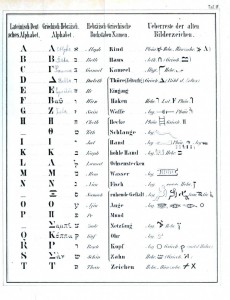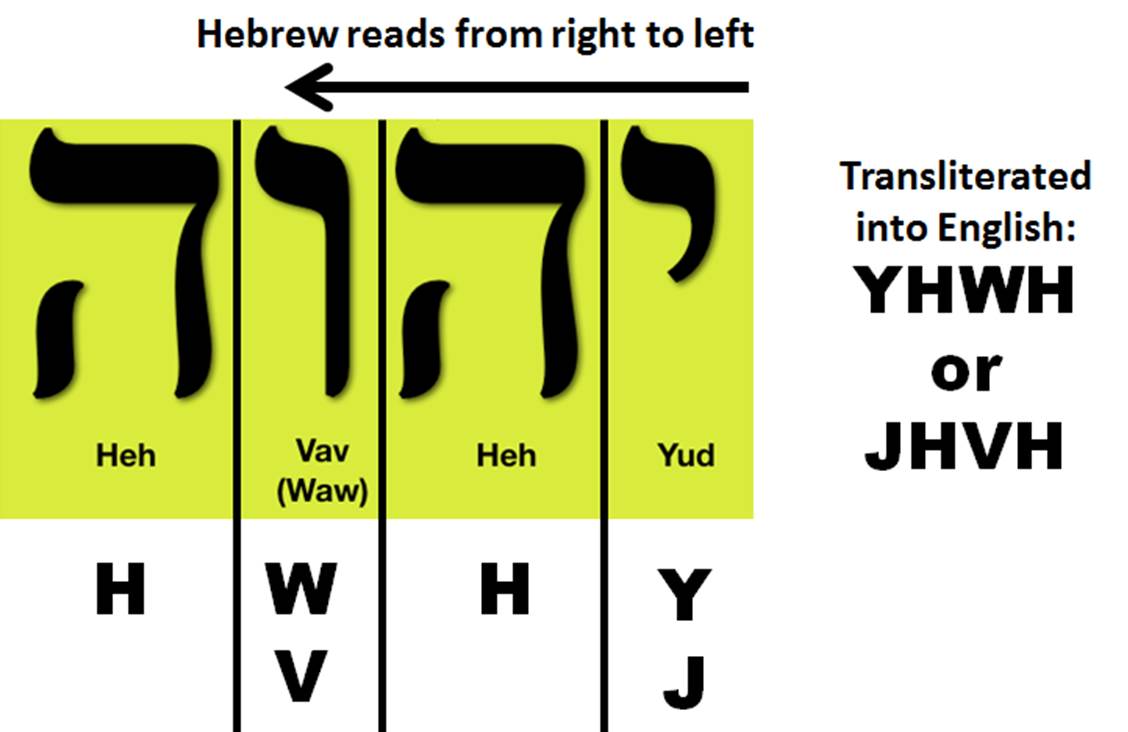Instances of the letter “J”, including Jehovah.
As many might already know, the KJV uses the letter “J” to replace the sound of the Hebrew “י” (yod). Today, the yod is usually translated as a Y or I in English. To be fair to the KJV translators, the sound of the letter “J” was in flux for a long time. In fact, during the time of the first KJV edition, there was no “J” used in the KJV, not in the Bible that it was based on, which was the Bishop’s Bible. In the beginning, the J in English was more like the J sound in German. Given the reliance on German translations during the reformation, it is no wonder that the German J found its way into English translations as the equivalent of the Hebrew yod.
How did the KJV and other early translators decide on the “J” translation rather than “Y”?
The KJV translators and other reformation era writers had a problem on their hands. Sometimes the letter “i” was used more like a consonant than a vowel. The hard “i” sounded like a combination between a Y and a J. This worked fine for a while but eventually this hard sounding version of the “i” letter needed its own representation. This hard “i” was given curve at the bottom and the letter “j” was born. This letter later became important because in the 1500s influential scholars would argue that names like Jesus and Jehovah should be translated using this new “j” letter, similar to the Germans.
In 1524 Gian Giorgio Trissino made an argument connecting the Greek “i” and the Hebrew yod, based on the Greek and Latin translation of the Hebrew name Yeshua, which

later became Jesus. Trissino was able to identify the Greek “Iesus” a translation of the Hebrew “Yeshua.” Greek and Latin do not have a “J” sound like modern English does. They also lack the “Y” sound. Because of this the letter “i” ended up becoming the letter of choice to represent the Hebrew “י” (yod), in most early English Bible translations. After Gian Giorgio Trissino, English added the “J” letter to differentiate the two versions of the “i”. J was the last letter to be added to the alphabet and it is also right next to the “i”, surely no by coincidence.
I point all that out just to give a brief understanding of “J” development. The real issue is that the letter “j” became a hard consonant and sounded a lot less like it did originally. Perhaps because it was so similar sounding to the “y” it got hardened for the sake of distinction. However, history taken into account, we should be directly translating the yod into English using the “y” sound today.
We must also keep in mind that the Hebrew language was all but dead until the reformation period. This is why the early English translations relied heavily on the translation into Latin from the 4th century. It would be another 200 years before Hebrew made a full revival. This is why all modern Hebrew to English translations removed the “i/j” and replace it with a “y”. We understand Hebrew better and the use of the “j” in English has changed too drastically to retain it as an equivalent to the Hebrew yod.
In summary, the translators of the KJV were working with the information they knew to be true at the time. It’s not their fault. But times have changed and we have better information now. Holding onto old ideas that have been proven wrong or even just become outdated is irresponsible. No serious Hebrew scholar would use the modern J to translate the Hebrew letter yod. We know it sounded like a modern “y” or an archaic “i/j”.
[Featured image from 924jeremiah.wordpress.com]

You speak pretty authoritatively on this but as somebody named Joseph, I object and disagree. In English Joseph is Joseph is Joseph. We’re not gonna start calling people Yehoseph, or Yosef. Likewise, Joshua, is Joshua, Jesus is Jesus.
The End.
We use the English ‘J’ when Transliterating the Creator’s name because letters have numeric values that add to their meaning. When you change a words numeric value you change the meaning of that word.
Hebrew YOD= 10 represents a hand or pointed finger
English J= 10 represents a pointed finger
English Y= 25 represents a forked road or forked tongue
Yet in using the ‘J’ when writing the NAME- it is still pronounced with the ‘Y’ sound as the J is nothing more than the Roman ‘I’ consonant. Word Values matter.
The J and Y did not get affiliated because of gematria. If that were the case then the rest of YHWH would be wrong numerically.
I recommend (re this topic) looking at an original 1611 printing of the translation made under the jurisdiction of King James I. It does not use the letter “J”.
https://archive.org/details/1611TheAuthorizedKingJamesBible/page/n3/mode/2up
That is a great observation that I forgot to detail. I added a note to clarify that I was not referring to the original edition but the editions that are mostly read today. Thanks for this though. It’s important to note.